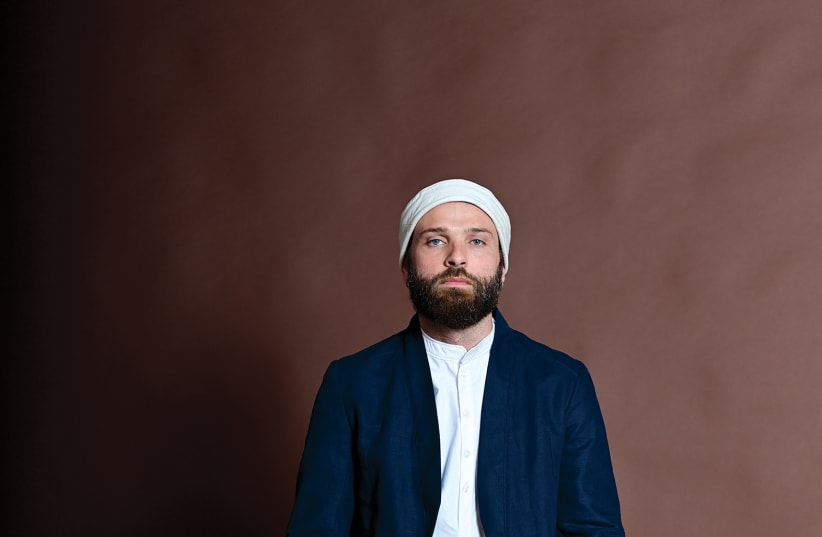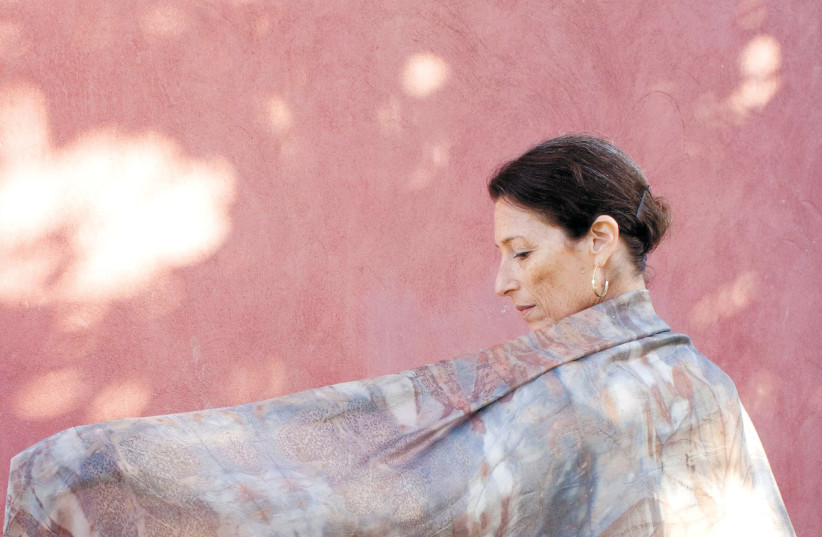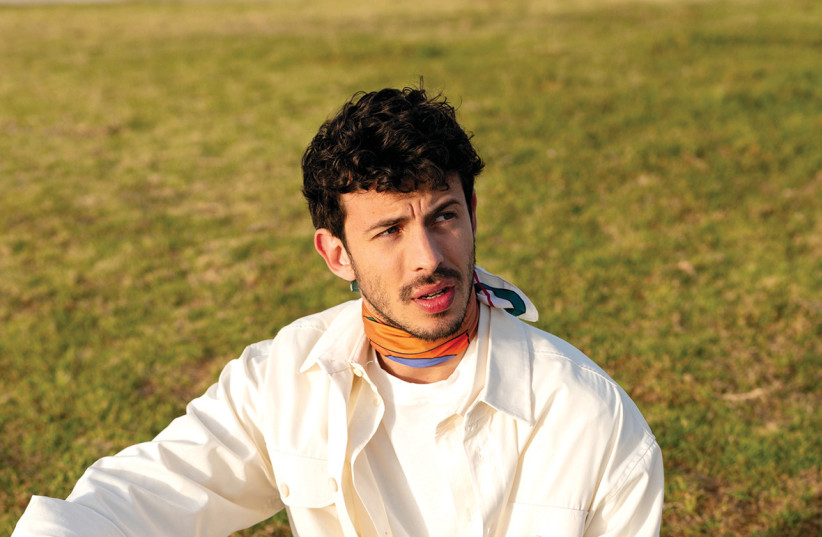It is a mark of societal maturity when a community or country starts to strut its very own stuff. Yes, we live in an increasingly social media-, Internet-, Zoom-connected global village. That can provide the rich nourishing fruits of cross-fertilization. The downside of that is you can end up with a compromised, diluted version of local artistic output which tends to a more level playing field ethos rather than offering a taste of domestic dynamics.
However, thankfully, there are an abundance of singularly Israeli cultural riches to be had. That comes across in the Primavera Designers’ Fair, which takes place at Hansen House for the 10th time, March 23-24.
The first decade-marking edition is being rolled out under the aegis of producers-artistic directors Aner Shevach and Karin Shabtai, with Smadar Tzuk ensuring that the logistical-managerial aspects run smoothly.
The artistic work of Aner Shevach
Jerusalem-born Shevach is a good choice for the artistic stewardship role. He is a respected designer and spent four years in Paris honing his craft and absorbing the philosophies, lines and vibes of the global fashion-design world.
He returned to his hometown a couple of years ago, immediately resuming his slot in the fair as an exhibitor. Now he has his skilled and trained hands on the event tiller.
As in previous years, the roster reflects a broad sweep of approaches and aesthetics, with creations from all sorts of fields, such as fashion, jewelry, ceramics, print and textiles.
All told, visitors to Hansen House this weekend will be able to get up close to the work of some 30 designers reflecting a broad arc of ideas, sources of inspiration and visual presentation.
As a born-and-bred Jerusalemite, Shevach is happy to be back here after his Parisian furlough and to reconnect with his roots. “I am very interested in the history, the backdrop to where we live,” he notes. The local zeitgeist, fittingly, comes across in this year’s fair. “Around half of the exhibitors are from Jerusalem and the surrounding area,” he notes.
That said, these days it is hard to cut oneself off from offshore influences. That is not necessarily a bad thing, but one hopes the core of home-based spirit also features in Israeli design work. Shevach feels there is a checks-and-balances flow to the sector.
“On the one hand, I think that design across the world is more globalist in terms of aesthetics. But I think in Jerusalem the design field, at least in the fashion and accessories sector, it is largely tailored to local requirements and inspiration and, of course, to the weather.”
That brings us neatly around to Shevach’s own slot in the local and global fashion industry. In recent years, his output has gained attention, both here and abroad, primarily for his 5777 label headwear creations. “I am a hat person, and there is now far greater awareness of hats and protection from the sun, say in Israel, as compared with Europe.”
Fans of older celluloid may have noted that dashing protagonists such as Cary Grant, Spencer Tracy and Bette Davis were hardly, if ever, caught in an outdoor scene sans chapeau. That lost traction in the Sixties but, Shevach says, it eventually came back into the sartorial fold.
“In the Eighties and Nineties, it was considered sort of uncool to wear a hat.” Headwear gradually regained aesthetic credence, and became popular again partly due to health considerations. “People became more conscious of the importance of sheltering from the effects of the sun. But then they began relating to hats as a fashion item too, that they can improve their appearance on the street.”
Naturally, in the holy city, religion also comes into play. Shevach began dipping into that aspect of local life early on. “When I was a student, I wanted to learn about hat making,” he recalls. He headed for downtown Mea She’arim. “I went to the Ferster Hats [store]. They are the only ones in Israel that preserve the craft. They are an empire within the haredi community.”
It proved to be a rich seam for Shevach to mine for his own offerings for the secular crowd. “They have the original hat blocks they brought over from the shtetls. They don’t use them today, but they base the models they make for the various communities on that DNA.” Some of that will be on display at Hansen House this weekend, with items from the 5777 range laid out for our viewing interest and pleasure.
Male-oriented fashion content
INTERESTINGLY, THE Primavera lineup includes some male-oriented content. As fashion is generally perceived to be aimed at women, that seems to add an intriguing angle to the fair rollout. Shevach mentions an aspect of local life which, he feels, impacts powerfully, possibly subliminally, on fashion choices by Israeli men. “Men here don’t like olive drab. That’s because of the army uniform,” he chuckles. “Sometimes there are factors we are not aware of.” Duly noted.
Then again, he thinks local males have become more focused on their appearance on the street and are now looking to make some aesthetic statements of their own. “There is definitely more awareness among men these days, and more daring.”
But not too daring. “Overall, Israeli men want to be casual and feel comfortable with what they wear,” Shevach says. “That is something that has not changed over the years. Men’s clothes can be adventurous, but they generally have to be comfortable to wear.”
“Overall, Israeli men want to be casual and feel comfortable with what they wear. That is something that has not changed over the years. Men’s clothes can be adventurous, but they generally have to be comfortable to wear.”
Aner Shevach
The masculine side of the fashion sector is primarily represented at Primavera by Tel Aviv-based designer Doron Ashkenazi who, like Shevach, undertook a significant part of his training in Paris.
I wondered whether the greater awareness of gender fluidity impacts the way the fashion industry goes about its business. “I think so,” Shevach suggests. He says the divide between traditional genders is often crossed.
“When I came back from Paris – I also design men’s clothing – I presented a collection of men’s clothes, most of which was bought by women,” he laughs. He has some experience with that in his own backyard. “I sometimes wear my partner’s clothes and she wears mine. The vast majority of hats and clothing I create are unisex.” That could cut down on the family outlay on clothes, not to mention closet space.
Shabtai states that featuring male fashion items is, for her, a given. “We have things from every area of design. Today, a lot of designers work in the area of unisex.” Reminds me of the early 1970s when, for a while, that was all the rage. Seems it’s back.
She also proudly and unequivocally points to the continuing evolution of a local take on design. She was keen for that to take center stage at Primavera, alongside a moral stance. “One of the things we wanted to focus on was local designers using local materials, and fair-trade manufacturing practices. There are all sorts of values in the design world that we look for and embrace. We no longer have stalls with eyeglasses made in China.”
That also sounds like a clearly needed environmentally friendly line to take, and also helps the artists and artisans to get a deeper, hands-on understanding of their craft. “We work with designers who make their own fabrics and ceramics clay,” Shabtai continues. “There is something special about that, which we at Primavera consider very important.”
The adoption and integration of facets of life here also involve engaging with local flora. That is conveyed in works by several exhibitors at the fair, such as the GulVeDek and Reut Rozenberg pottery studios, printmaker Adee Ardon, and the Jam Inc jewelry design outfit. It is a recurring theme at Primavera.
“One of the motifs we worked with, in terms of graphic design, is local wildflowers and all sorts of Israeli thorny flowers,” Shabtai explains. That was then married with the singular aesthetics of the venerable host venue. “We took that beautiful object, the primeval elemental thorn, and set it against the unique architectural aspects of Hansen House and these grounds.”
It was a matter of fusing seemingly contradictory entities to generate a heightened oxymoronic end product. “We thought about taking the beauty and juxtaposing it with the skeletal thorny flora.”
That sort of encapsulates what Israeli aesthetics and design are about, and may point a harmonious way forward for us all. The vast range of cultural baggage we have all brought to this part of the world can set off challenging flashpoints, but when we learn to accept and learn from others who have a different viewpoint of life and cultural mores, that can enhance and enrich our lives and, in this case, artistic endeavor.
“The cultural melting pot of Israel, and of Jerusalem, is a major source of inspiration for me,” Shevach declares. The aesthetic melting pot, particularly in Jerusalem, is so rich and fascinating.” While he absorbed a lot on his French sojourn, the fair curator says he gets plenty from his reclaimed homestead too.
“I love to create in Jerusalem. I feel there is a fluidity here, not just in terms of gender but also in terms of the clothing aesthetics. I enjoy looking at all the differences between the various communities in this city. I like to design robes and galabeyas. That comes from the multitude of cultures here, more than in Tel Aviv. In that respect, Jerusalem is more interesting than Tel Aviv.”
“I love to create in Jerusalem. I feel there is a fluidity here, not just in terms of gender but also in terms of the clothing aesthetics. I enjoy looking at all the differences between the various communities in this city. I like to design robes and galabeyas. That comes from the multitude of cultures here, more than in Tel Aviv. In that respect, Jerusalem is more interesting than Tel Aviv.”
Aner Shevach
One name that caught my eye was the Totzeret project which, the fair blurb notes, “fuses nature, illustration and design with foraging kits and cards with local wildflowers.” That sounds tantalizingly heartwarming. “Totzeret is a print brand that takes its inspiration from local nature and also from a more national graphic language, a bit yesteryear sovereign.” That is an aesthetic with which many of us are familiar. “We know that from Land of Israel flora field guides and that sort of thing; you know, from the Keren Kayemet ambiance.”
Shevach says the Totzeret threesome does that well. “They bring that sentiment into contemporary times, and in a craft-oriented way in terms of the illustrations. I think their work is charming.”
He recently put his money where his mouth is. “I got a foraging guide designed by them for my daughter. It is lovely, with cards with pictures. We went for a walk and we used the cards. That was fun.”
That, indeed, sounds delightful. And the vibe at Hansen House this week should follow suit as designers enjoy a rare chance to get together in hub-like circumstances that may spawn new exciting syntheses. Stay tuned. ❖
In addition to the designers’ booths, there will be family-friendly workshops, vegetarian vittles, and those who stay on late will be able to groove to nightly DJ sets courtesy of Albukar. Entry is free. For more information: hansen.co.il














